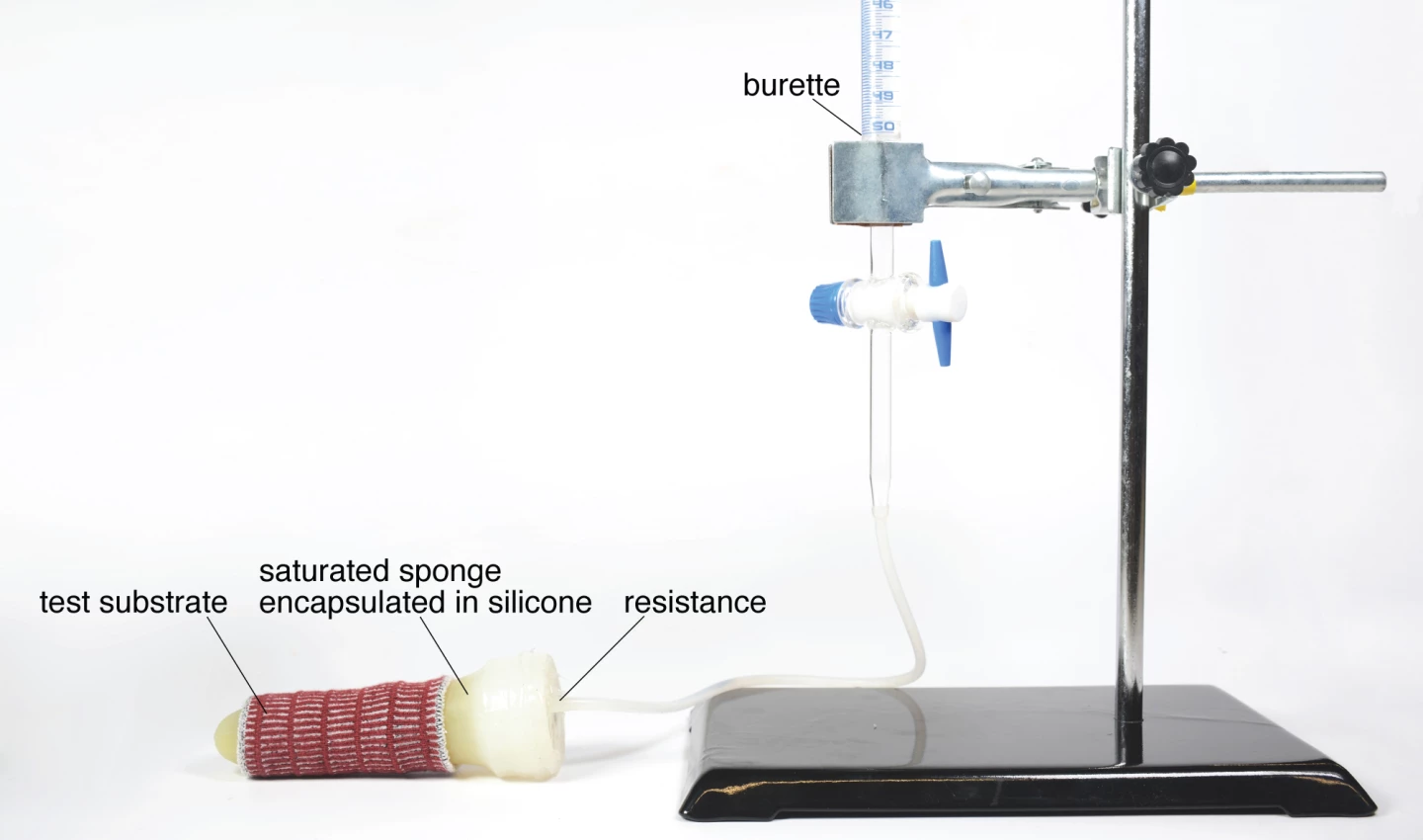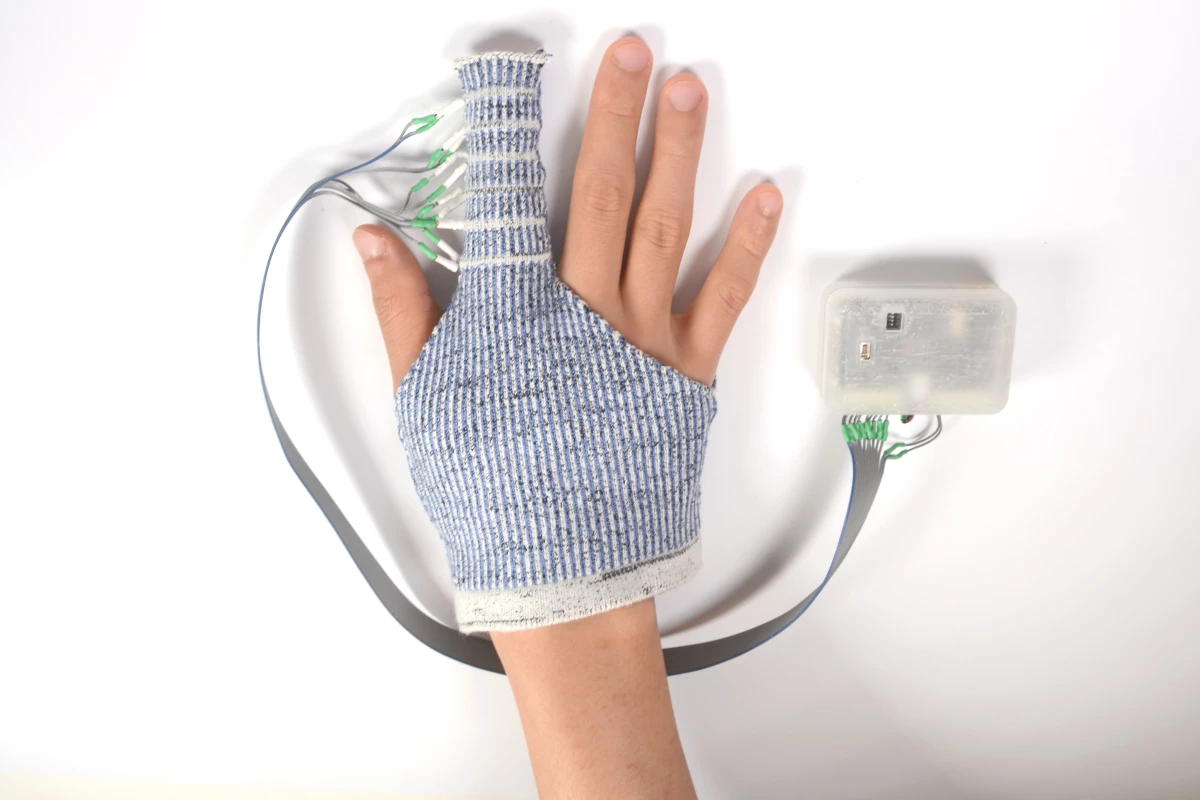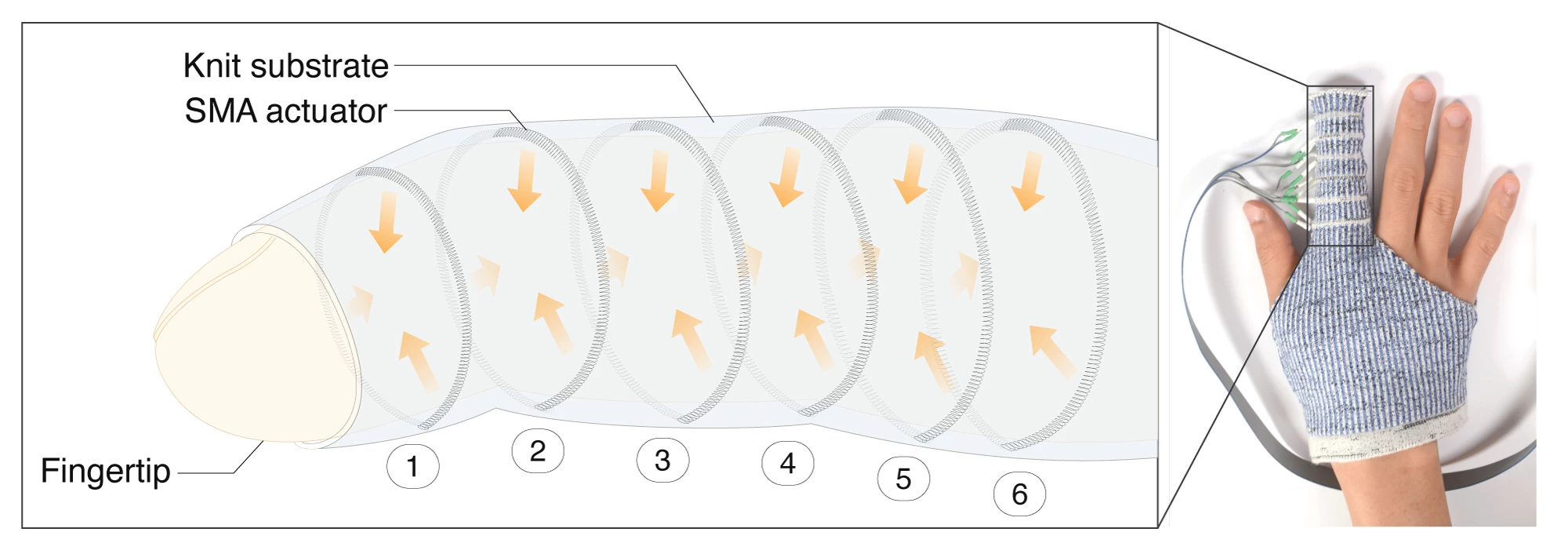Hand edema, which is a swelling of the fingers due to the accumulation of fluid from injury or disease, is typically treated via a hand massage performed by a therapist. A new finger-massaging glove, however, may offer a less costly and more accessible alternative.
Developed by a Cornell University team led by Asst. Prof. Cindy (Hsin-Liu) Kao and doctoral student Heather (Jin Hee) Kim, the experimental device incorporates a technology known as KnitDema. The current prototype is made up of a knitted yarn which encases one finger. Woven into that yarn are a series of thread-like shape-memory alloy springs, each one of which encircles the finger like a ring.
A small hard-wired printed circuit board delivers an electrical current to each spring, causing it to heat up and contract. When the current ceases, the spring cools down and expands back to its default state.
Therefore, by sequentially activating the springs (starting at the top), it's possible to repeatedly compress the finger, moving from the tip down to the base. In a lab simulation, a KnitDema sleeve was able to push water out of a foam model finger and up into an attached glass tube.

Both the duration and the intensity of the finger-squeezes can be manually adjusted to suit the requirements of each patient. The springs contract at a temperature of 45 ºC (113 ºF), which was comfortable for volunteers who tried out the device. And as an added bonus, even when the springs aren't in use, the yarn itself still passively compresses the finger, helping to reduce swelling.
"Instead of having to schedule a hard-to-get visit with a therapist for MEM [manual edema massage], we envision this as something that people could take home with them," said Kao. "They would go to their rehab doctor and their occupational or physical therapist once, and at that session they would be able to configure the right amount of compression for daily use, then adjust as necessary."
Sources: Cornell University, Hybrid Body Lab






